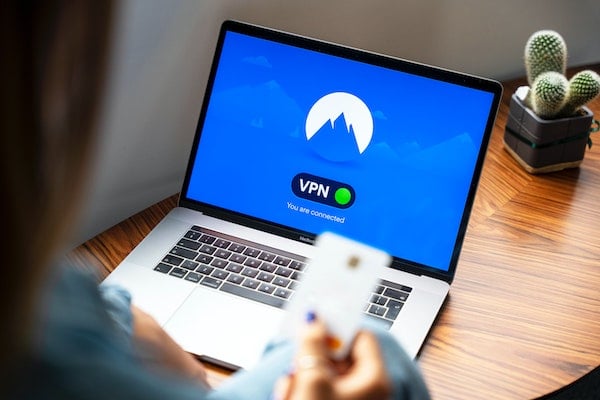Published on
Keeping A Digital Presence at the Forefront of Your Institution

With staff and faculty working remotely, there’s an increased chance of people disconnecting from their colleagues and the institution itself. With an uncertain return to campus, it’s critical to keep connected and check in with each other. If done, people are more likely to focus on the task at hand—serving the students. They, too, might feel the same disconnect, and therefore it’s important to provide learners with the right digital space that delivers a full experience. In this interview, Brad Mahon discusses continuing education’s perspective on the future of normal, the importance of a digital presence, and how continuing ed may be able to work closer with the broader institution.
The EvoLLLution (Evo): What are a few of the norms of institutional management that you’ve seen evolve as a result of the COVID-19 pandemic?
Brad Mahon (BM): In real estate, it’s “location, location, location,” but in a global pandemic, it’s “communication, communication, communication.” In this new normal, we’re doing a lot of overcommunicating but in a good way. It’s made our decisions transparent. We tell people what we’re doing and why we’re doing it. There has been good feedback from it, and people are hungry for information. In fact, I now have weekly all-faculty meetings.
With these virtual meetings, it’s not just about providing attendees with a laundry list of operational updates, it’s about mental health too. When you talk about a new normal, I’m proud that we live in a society in which mental health is actively discussed, but now we’re beginning to elevate that. It’s important that we as staff stay connected because it’s easy to feel isolated, especially when working from home.
The other aspect of this new norm has become the relaxation in formalities. By that, I mean, when you have these virtual meetings, people are broadcasting from their homes—from their patios, kitchens, living rooms—so there are distractions that have made their way into the meeting that makes everyone feel more relaxed—a cat strolling in front of the screen, a child asking for a juice box to be opened, etc.. We all understand the challenges that come with working from home. This element of being at home has made staff get to know each other more. We are all more human.
Evo: How important is the website as a front door to the institution, and a mechanism to communicate with your broader audience? Do you think of the internet differently now than you did in February 2020?
BM: Absolutely, and this is the gateway to our whole world now. The internet is not a fad. It’s the lifeline to the world for a lot of people. For example, we started a social committee in the faculty a couple of years ago to help build staff morale. Although we’re under the umbrella of a public sector institution, we need to have a little bit of that private sector fire burning in us.
That hunger needs to exist in academia like it does in the corporate world. In the past couple of years, we’ve really worked hard on our employee engagement and have added more social events. Colleagues don’t need to be best friends, but you want them to enjoy working together. These aren’t just people that you’re working on some project with; these are people who actually are invested in your life and your mental health and know a little bit about you too.
Our social committee recently added multiple events like lunchtime workout sessions, virtual coffee breaks, cooking sessions, game nights, etc. We’re all just trying to get through this together. We have our personal friends and family, but that’s something the workplace has become too. It’s more than a place we go to earn money—it’s become a source of support as well.
Evo: What aspects of the student experience have fundamentally shifted as a result of the movement to online and remote and distance education?
BM: Something that has become a real topic of conversation is the way that people learn. There’s greater awareness of how people are consuming knowledge. Once everything shut down in March, postsecondary schools still had a few weeks left to their winter terms. To cross the finish line, most schools did whatever they could, whatever they had to do, but it wasn’t really online learning. Rather, it was a type of alternative delivery to get students what they needed to complete the term. It was the right approach, and it worked. However, over the spring and summer, we’ve been able to have deeper discussions about how people are learning, particularly as we planned for fall programming. Knowing that we were going to use an alternative mode of delivery, these upcoming courses would be different from what was delivered in at the end of March. Faculty members had some time to think about how they were going to deliver content and engage students virtually. Overall, institutions have upped their game.
In continuing education, we have considerable experience delivering online courses. We have true online programs–offerings that were conceived from their inception to be online. When you look at the credit faculties that run bachelor’s degrees, they haven’t necessarily had to develop online classes before, so there really has not been, for example, online exam proctoring software. Well, that’s changed. This summer, we went to RFP for an exam proctoring software. We have always taken academic integrity seriously, and we had to fulfill that responsibility in the online world, too. The reason we’re doing this is to make the experience better for students.
Overall, what you’re seeing is institutions wanting to invest particularly in technology. If everything is going to be online, then we want to give students the best professional experience possible. Students are a type of customer, and we say that because we’re a revenue-generating unit. We treat the student like a valued customer. You want their experience to be great from the moment they register to the time they receive their parchment.
When we were looking at a new registration system, I wanted it to be just like, for example, Amazon because it’s so easy, and it provides a great customer experience. The software is so intuitive. If I order a book, the website will even prompt other recommendations similar to what I’ve purchased. I want that same experience for students. I want it to be easy and for it to guide them. Students are on your website because they’re interested in your school, so why not help them through the process. We’re seeing that more across campus. We see that students have choices. With everything being online, they have also developed higher expectations regarding online education.
The pandemic has really affected our institution’s finances. Food services, parking, and residences have all been affected. That financial hit ripples across the institution. With continuing education, financial sustainability is at the forefronts. We think about it every day because it guides our decisions. It’s paramount.
Evo: Do you think some of these changes—especially with communication and digital presence—persist into the new normal?
BM: I think that financial accountability is going to become normalized. Not only from an institutional perspective, from which we’re talking about the value of our finances across campus, but students as well. Students are certainly questioning the value of education this fall. They’re asking why they have to pay the same amount if they’re not receiving the same services.
However, as an institution, we’re still providing learning. It’s going to be different, but students are still learning the skills they would in a classroom and will receive the same credential. When it comes to student services and athletic fees, we have to provide a business case to the students. Students are asking questions that we’ve never had to answer before. They are actively questioning the value of the education, which in turn, makes us more accountable. We can’t be in a position of ignorance or arrogance.
What we’ve really been able to do is make that value proposition to students and show them what they’re receiving from their education. There’s a lot of thought going into lectures and assessments that are now better suited for the virtual format. A part of the new normal will be the general humanization of things. We’ve learned a lot about ourselves, our students, virtual delivery, and we’ve done it together.
Evo: What are some characteristics of an ideal institution of the future?
BM: It’s the lessons learned from this pandemic. If I were to give you a punchline, it would be that the ideal institution really embraces the blended learning format. You can’t ever lose the dynamics and energy of a face-to-face experience—of having everyone on campus and in the classroom. We don’t want to lose that, but we also have to recognize what we’ve achieved during this time. It’s more than just flexibility and convenience; it’s affirmed the importance of having some kind of tech acumen.
There are still people who have a strong dislike for the online environment. But those who had to go through with it to get their credits ended up having some of those negative thoughts demystified–both students and instructors. And yes, most of them were nervous and new to everything, but they succeeded in doing it.
Some people prefer online simply because of its convenience. It’s a marriage between the energy and the synergy that often come from the in-person classroom experience. Again, we know the internet isn’t going away. In an ideal world, it would be about blended learning. I wouldn’t ever want to lose the traditional classroom, but people should start getting used to this new model.
Evo: How does digital engagement get consciously built into this future model, so we’re prepared for what students are looking for?
BM: It’ll change because it’ll be more customer-driven. Learners are going to expect more, especially when it comes to their online experiences. Part of that will have to do with the opportunity that’s out there for some companies.
Institutions will be looking to raise the bar too. In March, we were just trying to get to the finish line. Here in September, there are greater expectations. We understand that faculty are re-emerging from the summer, but now there’s a fresh energy.
Then, if we’re online come winter, the bar will be even higher. That bar will continue to increase the longer we stay in this environment. When we talk about digital engagement, it’s going to happen organically. With the summer, we had a significant increase in enrollments. Students loved that they were able to complete their education on their patios and decks and enjoy the weather. With winter, we don’t know what will happen, but students have been looking for more digital offerings.
It’s also going to be more competitive in the public sector, and that’s not a bad thing. Companies will email me more and more, telling me they have programs they want to license to me or that they have curriculum they can sub-license. But the sector will change, and the reason institutions will have to engage these companies and raise the bar is that you’ll start to see institutions making claims about their delivery.
At my institution, we talk about the personalized experience with our students. As you go forward, schools will put more into their brand and building their identity, marketing, and online prowess. People are looking for strong digital learning. We won’t ever go backwards.
This interview was edited for length and clarity.
Disclaimer: Embedded links in articles don’t represent author endorsement, but aim to provide readers with additional context and service.
Author Perspective: Administrator



